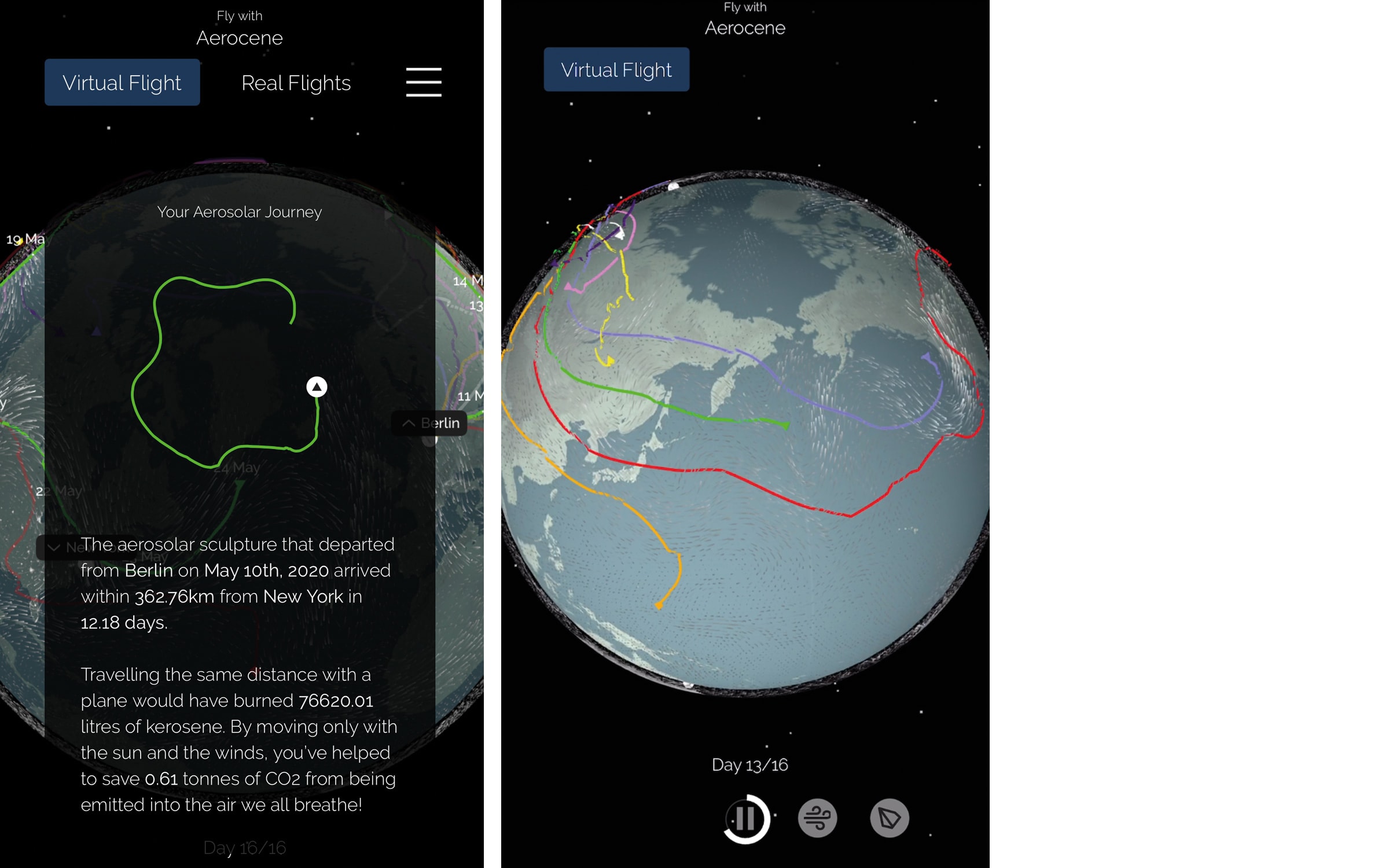Melden Sie sich an oder richten Sie ein Benutzer*innen-Konto ein. So können Sie Art Basel Stories abonnieren und direkt in Ihren Posteingang bekommen.
For the good of most of this planet’s inhabitants – spiders, humans, plants – I hope many things will change after the pandemic and that we find alternate social, environmental, and mental ecologies of practice to change some of our habits, to not change the climate.
Here, I’d like to share two artworks that may help us imagine how we could free the air, and enter an era that, with a community of colleagues and friends, we have named Aerocene. The Aerocene era resists today’s gravity and maintains a stable temperature in the air to keep us all together on this journey aboard this flying earth.
In January, just before the pandemic began, we staged Fly with Aerocene Pacha, an artistic performance in the salt flats of Salinas Grandes, Argentina, that was the culmination of more than 20 years of experimental work and realized as part of ‘Connect, BTS’, a global art project initiated by the Korean supergroup BTS. Aerocene Pacha was the first sculpture to lift a human into the atmosphere, allowing its pilot to float without the use of fossil fuels such as helium or lithium. It became the most sustainable flight in human history and set six world records across two categories. The sculpture is filled only with air. The sun heats the air inside, and when it is hot enough, the sculpture rises into the air, before beginning its journey, carried only by the wind.
We named the project after Pachamama, an Andean concept that connects what lies below and above the earth’s surface with the furthest reaches of the cosmos, uniting space and time. Fly with Aerocene Pacha stood in solidarity with the Salinas Grandes region’s 33 Indigenous communities, whose home has been invaded by lithium-mining companies looking to capitalize on the so-called ‘green revolution’ ushered in by electric cars. This revolution is simply a rebranding: It maintains the principles of earth extraction and exploitation of Indigenous life that have come to define our economies and led us to the current climate crisis. Aerocene Pacha flew above this land bearing the slogan of these communities: ‘Water and life are worth more than lithium.’
Since Fly with Aerocene Pacha, I have been using the acronym CEPCF to fly free from carbon-extractivism-patriarchy-capitalism-fossil fuel. Our experience in Argentina really emphasized that it is not enough to imagine a future free from fossil fuels if we don’t also rid ourselves of the ideologies that have created its economy. You cannot fight climate change without fighting patriarchy, capitalism, and colonialism – all of these are rooted in the same ideologies of domination and extraction. Moving into Aerocene would completely overhaul the current systemic ideals.
Learning now that air pollution is intrinsically linked to lung diseases, as well as to complications and poor recovery from Covid-19, I wonder: How can we travel by plane in the same way again? Can we change the way we travel in the air? Where and when should art fairs be organized if we travel more sustainably?

I think the coronavirus crisis will lay bare the fact that, when it comes to public crises, be they due to a virus, pollution, or endless wars, we must act together. This includes not only people from different nations but also animals from different species and forces, both living and nonliving.
As a new era after the pandemic, the Aerocene can hopefully propose an alternative to the human-centric chapter of the Anthropocene. Start to plan your next trip with Aerocene Float Predictor, an artwork that can take you to another era – an era of social responsibility.
Tomás Saraceno is represented by Tanya Bonakdar Gallery (New York/Los Angeles); Andersen's Contemporary (Copenhagen); Pinksummer Contemporary Art, (Genoa); Esther Schipper (Berlin); Ruth Benzacar (Buenos Aires).
The Aerocene Foundation (2015–), initiated by the artist Tomás Saraceno, is a nonprofit organization devoted to community building, scientific research, artistic experience, and education. At the core of the foundation is Aerocene, the culmination of more than 20 years of experimental work to propose a new era for the air, to free the air. Aerocene’s activities focus on the development and circulation of aerosolar sculptures that fly powered only by the heat of the sun and infrared radiation from the surface of earth. As an ever-growing research and experimental practice, Aerocene is open source. It consists of a dedicated and diverse international community of practitioners who collaborate to support climate activism and promote environmental awareness and atmospheric-sensing experiments.
Top image: Fly with Aerocene Pacha: Tomás Saraceno for Aerocene, 21-28 January 2020. Salinas Grandes, Jujuy, Argentina Human Solar Free Flight as part of Connect, BTS, curated by DaeHyung Lee. Courtesy the artist and Aerocene Foundation. Photography by Studio Tomás Saraceno, 2020 © Studio Tomás Saraceno.

